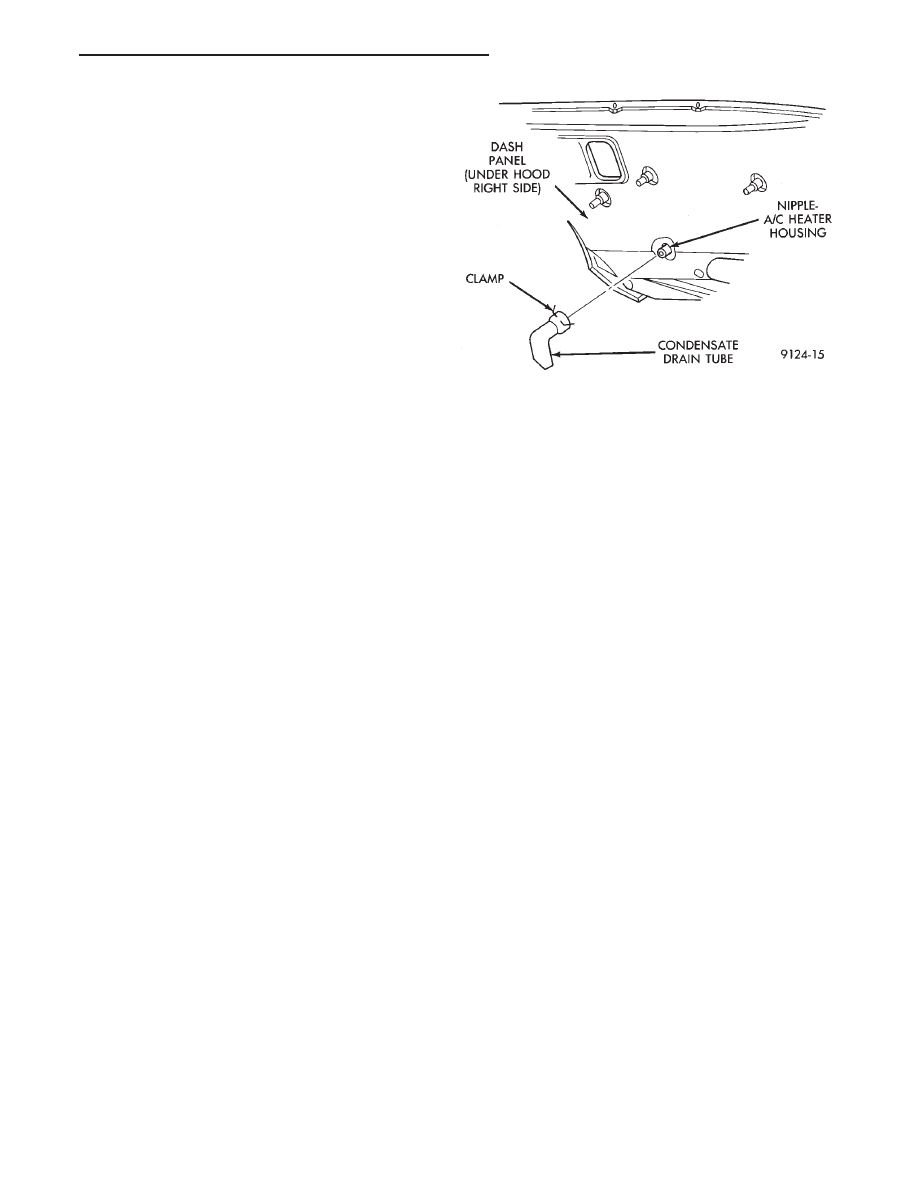Chrysler Le Baron, Dodge Dynasty, Plymouth Acclaim. Manual - part 201

the passenger compartment. It is normal to see con-
densate drainage below the vehicle. If the tube is
damaged, it should be replaced.
REMOVAL AND INSTALLATION
(1) Raise vehicle.
(2) Locate rubber Drain Tube on right side of dash
panel (Fig. 5).
(3) Squeeze clamp and remove drain tube.
To install, reverse the preceding operation. Check
the drain tube nipple on the heater-A/C housing for
any obstructions.
Fig. 5 Condensate Water Drain Tube—Typical
Ä
HEATING AND AIR CONDITIONING
24 - 65